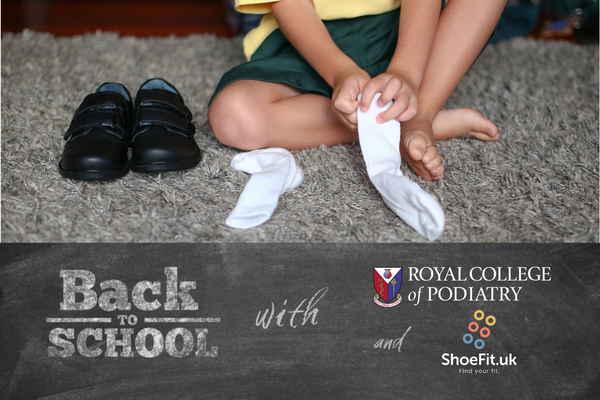Back to school

What to look for when buying children's school shoes
- Note for members:
Back to school resources are available for members in the members-only online shop.
We know shopping for school shoes can fill a parent with dread. With the bones in the feet not fully forming until your child is well into their teens, making sure their shoes fit properly is incredibly important to avoid long-term foot problems. Ideally, we would recommend that you take your child to have their feet professionally measured and fitted for shoes with a trained shoe fitter. We also know that this isn’t possible for every family so we caught up with Jonathan Varnavas, Director of ShoeFit.uk and a member of the British Footwear Association, to get his top tips for finding the best fit when shopping for shoes.
Before you go shopping, make sure you have checked your school’s uniform guide on permitted types of footwear. Some schools don’t allow certain styles to be worn or require non-marking soles for indoor use. For younger children, schools will often recommend avoiding lacing shoes unless your child can confidently tie them themselves. PE lessons can be a nightmare if the teacher is being asked to help tie a few dozen pairs of shoes all at once! When you take your child shopping, make sure they have the thickness of socks or tights on that they will usually wear at school. This will help reduce the chance of rubbing and blisters when they come to wear them.
When you get to the shop, remember kids are easily swayed by features such as flashing lights or popular characters when trying on shoes and will lie about how comfy they are just to make sure they can get those shoes. You can minimise the risk of this by drawing around your child’s feet on paper or thin card and cutting these out before you go shopping. Don’t forget to mark the right and left. Slip these into the shoes and check to see if they roll up at the front and sides of the shoes. If they do, don’t try these shoes on your child’s feet. If the insole of the shoe slides out then even better, you can use the template with this or have your child stand on the insole to give the fit an initial check.
Ideally, shoes should have a way to adjust over the middle of the foot. This could be with a strap or buckle, or with laces. Avoid ballerina pump-style shoes as these make the feet and toes grip the shoes to stay on and can cause long-term problems. Next check to see how bendy the sole is. A good shoe should bend at the toe and not under the arch. Ideally, the bend should line up with the big toe joint on the feet. Make sure the end of their longest toe isn’t right up against the end of the shoes too, remembering that the two feet will be slightly different in size and shape. Ideally, there should be at least the length of your thumbnail between the end of the shoe and the end of their toes. You can check this by getting them to wiggle their toes inside the shoe. Avoid pressing down to check as this can break the front of the shoe. Each shoe manufacturer will use a slightly different last, this is the foot-shaped mould they make the shoe on. This means that there is no standard sizing across brands and you cannot assume that your child will fit the same shoe size in every shop, or every pair, you try. Once you have found a pair you think may fit, get your child to walk in the shoes, watching out for their heel slipping at the back. Using stripey socks when you go shopping is a great way to spot if their heels are slipping out the shoes. If they are slipping, check they are fastened properly or try a different style or size.
After you have bought the shoes, make sure your child wears them around the house for a couple of weeks before the start of term. This helps ease the leather and minimises the chance of blisters on their first day of school. Don’t forget to label the shoes with your child’s name too. You don’t want them to come home minus a shoe in the first week of term. If you have bought leather shoes, make sure to polish the shoes regularly with shoe polish to increase their life span and keep them in top condition.
If you are considering a pair of preloved shoes for your child this year, we would generally advise against this as shoes shape to the feet and this isn’t ideal for children in particular. If you are using this option though, make sure you avoid shoes that have a heavy wear pattern on them. Areas to pay particular attention to are the ball of the foot and the heels. Too much wear here can cause long-term problems for your child’s foot development. You should also check the seams of shoes for splits and breaks that can let water into the shoe and result in wet feet. Children’s feet can grow quickly so check that your child’s shoes still fit every eight weeks or so. Make sure to check them for signs of wear or splitting too, especially during the wet weather. No one wants soggy feet at school!The Royal College of Podiatry is an Affiliate Member of ShoeFit.uk, one of the thousands of companies across the UK offering professional shoe fitting services and back-to-school fitting services. Ask at your local shoe shop to find out if they have a trained shoe fitter on site.
RCPod members can download a range of back to school resources in the members-only online shop.
